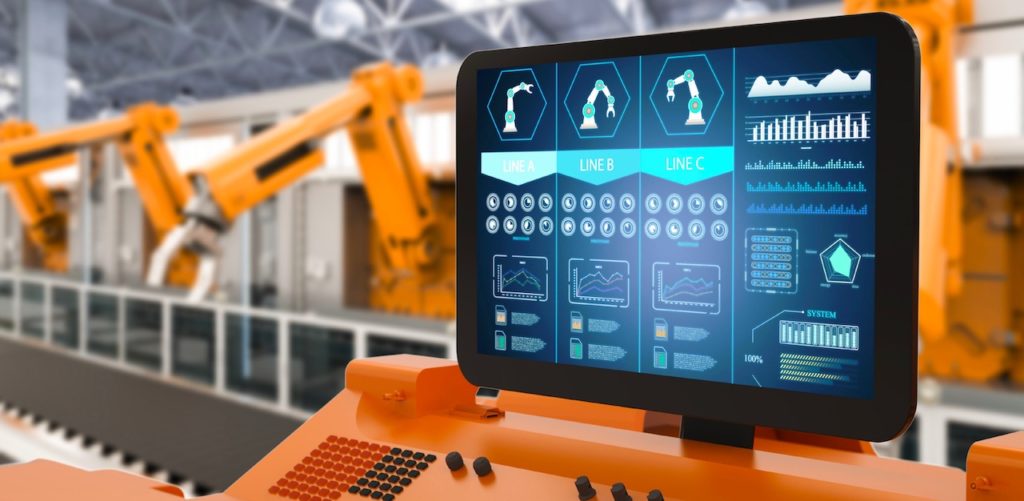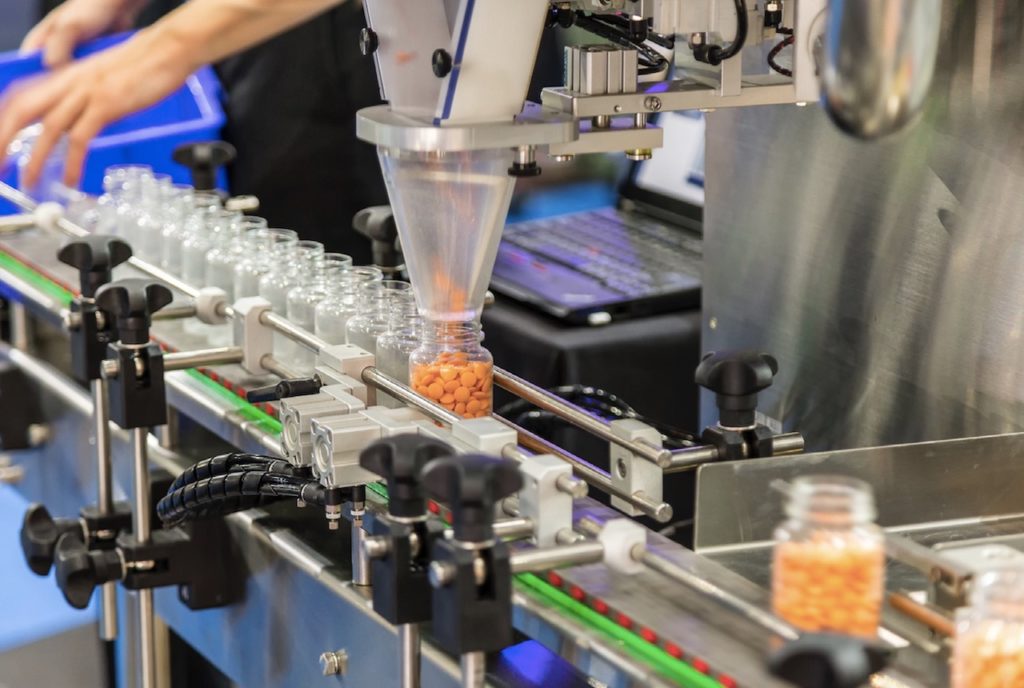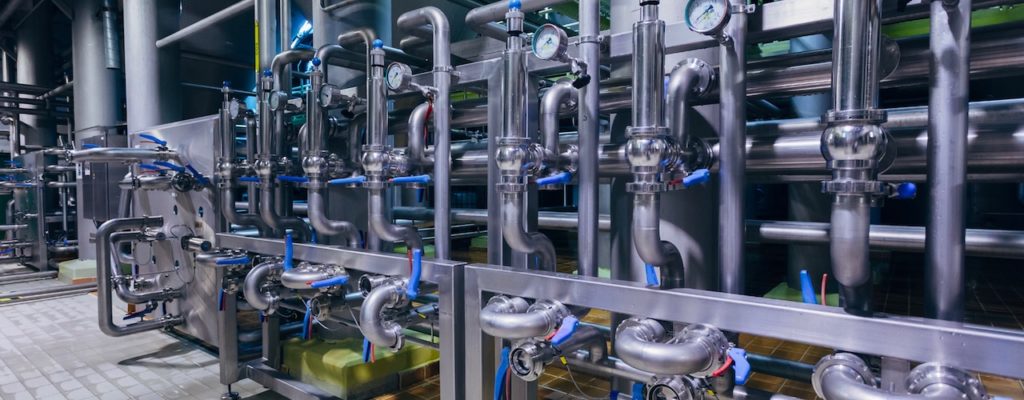The following are excerpts and a compendium of content from Belden and Lumberg Automation (a Belden brand). For more details, please read the posts on the Belden blog here and here. Also, please see the article in Control Engineering magazine here.
Executive Summary
The industry is lining up behind a single communications protocol—perhaps for the first time—and it’s benefiting every corner of the manufacturing environment, from electrical and production to quality control and shipping.
Why should professionals in the industrial world consider yet another way to connect automation devices when other innovations already exist for this purpose? Because IO-Link is different. This protocol has the ability to turn any IO-Link- enabled sensor or actuator (most devices today) into a “smart device” by simply connecting it to an IO-Link master for communication and data sharing. It serves as the backbone of movements such as Industry 4.0 and the Industrial Internet of Things (IIoT). Instead of competing with different network protocols, IO-Link acts as a perfect complement.
Why not just connect sensors and devices to an Ethernet network? While possible, this requires a highly specialized skill set (and the necessary funds to do so). Additionally, an Ethernet interface does not fit into the smallest sensors due to space and cost reasons.
Although it is already popular in Europe, IO-Link is also growing fast in North America. Industrial plants that want to stay ahead of the curve and take advantage of opportunities to boost performance, reduce downtime, enhance maintenance, improve quality management, streamline operations and outpace the competition should investigate IO-Link as a way to make it happen.
The Value of Data in Today’s Industrial World
Industrial environments are generating more data than ever before. Whether the numbers reflect facts about production volume, downtime or serial numbers, this information offers unique insight into processes and productivity.
Today, data is the lifeblood of modern manufacturing environments. And it’s not just any data we are talking about: It is actionable data that offers knowledge, insight and intelligence so you can make informed decisions with proof to back up those choices.
Many plants already use data for tracking purposes but this data can be used for much more: expanding go-to-market strategies, streamlining maintenance and operations procedures, improving uptime and increasing yield. The trick is to find an easy way to collect, analyze and display your facility’s data.
Using plug-and-play smart sensors powered by the standardized IO- Link protocol can help you take full advantage of the data your plant generates.
Historical Challenges of Device Communication in Industrial Environments
To communicate, every new I/O system has historically had its own connectors and shells. In order to deploy the system correctly, it was vital to learn about the specific fieldbus protocol being used (e.g. PROFIBUS) and select the correct media (each I/O system required different shielded cables and, depending on the system, input cards).
In addition to the hassles of simply setting up the I/O system, this also made it difficult to use solutions from different vendors. Because manufacturers used whichever I/O system protocol they preferred, not all manufacturers’ devices could work together.
Looking for a way to overcome these challenges, the industry designed fieldbus interfaces, where possible, into sensors and actuators. Although it was costly, this approach worked in some situations; however, a new complication arose along with this tactic. As robots and equipment grew smaller, sensors became smaller as well (along with mechanical components). This made it difficult to integrate fieldbus interfaces into sensors due to space limitations and the resistance of customers to pay for the low cost sensor segment. Additionally, in most cases, a fieldbus interface would not fit on a small sensor due to lack of space on the PCB.
In addition to becoming smaller, equipment in manufacturing and automation environments was also becoming more complicated, creating the need to monitor, gather and manipulate data beyond the basic “on/off,” “yes/no” or “high/low” capabilities that existing sensors offered. Up-and-coming industrial environments needed to know actual values: temperatures, pressure readings, airflow, etc.
As an answer to the challenges posed by these industry shifts, IO-Link technology was born. The protocol launched in 2009 with 41 member companies agreeing to commit to using the protocol. Today, manufacturers participating in the IO-Link Consortium number in the hundreds.
IO-Link Defined
When it launched, IO-Link was unlike anything the industry had ever seen before. IO-Link is not a fieldbus but all IO-Link devices can be easily integrated in the same way via a simple point-to-point communication protocol in all commonly used fieldbus environments and automation systems.
IO-Link connects automation devices in a way that other solutions haven’t been able to offer. As a simple, serial, bi-directional point-to-point connection for signal transmission and energy supply under any networks, fieldbuses, or backplane buses, it connects sensors and actuators to the fieldbus or industrial Ethernet. This enables sensors to communicate information—including status, events and configuration parameters—to systems.
For comparison, another common point-to-point communications protocol often seen in the enterprise world is USB. This standard connects computer accessories— such as a monitor, mouse and/or keyboard, for example—to your computer.
As a standardized interface (IEC 61131-9) based on a digital protocol, IO-Link works in the smallest of devices from any manufacturer around the globe, from North America to Europe and beyond. Created for sensor-level use, IO-Link relies typically on standard M12 or M8 connectors and three-wire cables to make sensors “smart,” communicating process data including a limited amount of parameters (e.g. temperature, humidity, color, etc.) and translating it into actual values. Instead of telling you whether a temperature level is “high” or “low,” for example, smart sensors that utilize IO-Link can transmit current and exact temperature readings.
An IO-Link system consists of an IO-Link device (a sensor or actuator) and an IO-Link master. Each IO-Link device is connected to one physical port on the IO-Link master. The IO-Link master acts as a converter or gateway that translates the IO-Link “message” into a fieldbus message (Ethernet message), controlling communication with devices and links to networks like PROFINET to share information with the control system. Data is transmitted from the IO-Link master via a high-level fieldbus communications protocol to a PLC or computer. (In the USB example referenced earlier, the mouse, monitor or keyboard would be the IO-Link device and the computer would be the IO-Link master.)
In many industrial environments, IO-Link-enabled devices are already in place—they are just behaving like traditional sensors because they are not connected to an IO-Link master. To determine whether your sensors and/or actuators are IO-Link enabled, simply look for the IO-Link symbol: a black and white double arrowhead which is commonly printed on the products or listed in the product manual.
Making the connection between the IO-Link device and the IO-Link master is where the magic happens. That connection supports the collection of advanced diagnostics, automatic device configuration and much more to help you evaluate performance and improve uptime.
How IO-Link Hubs Fit In
To utilize IO-Link protocol, sensors must be IO-Link on board. But what if your plant environment utilizes more standard sensors vs. those that provide an IO-Link interface? (This may be the case if you do not need complex diagnostic information for some applications, or if your sensors are older.)
In this case, make use of the advantages of IO-Link hubs. IO-Link hubs can be used to connect up to 16 binary switching sensors or actuators that deliver high/low signals, collect these signals and transmit them via IO-Link in one cable to any IO-Link master. The IO-Link master transmits the IO-Link signals as well as standard I/O signals via a fieldbus protocol to your PLC. This offers a cost-effective alternative for efficient signal collection and transmission.
Where IO-Link Can—and Can Not—Be Used
Because IO-Link can be integrated into virtually any fieldbus or automation system where sensors and/or actuators are used, it is ideal for factory and logistics automation environments.
IO-Link is currently being deployed in several types of industrial applications. A few real-world examples include:
- Assembly line automation – for simplified product changeovers and fast installation
- Intralogistics – for collision protection in overhead-conveyor applications
- Machine tools – for automatic sensor parameter settings (pressures, temperatures and airflow, for example) to support fast setup, reduce human error, and simplify sensor replacement
- Packaging – to validate machine processes
It is important to note, however, that IO-Link is not made to support every type of sensor or actuator. The protocol can transmit up to 32 bytes of process data per cycle. It is not suitable for transmitting megabytes of data that may be generated by devices such as cameras or large scanners, for example.
On the other end of the spectrum, if you manage simple, standalone applications that do not involve automation, then you may not see a great benefit from implementing IO-Link.
With a typical cycle time of about 2.3 ms, it’s fast enough for most factory automation environments but may not be ideal in every situation because it was not designed for high speed applications. If your current network speed operates with a cycle time of 10 ms or more, then IO-Link is likely a good fit for your environment.
It is also important to be aware of cable distance limits: The cable that connects the IO-Link device and IO-Link master must be 20 m or shorter to ensure transmission rates.
The Value of IO-Link
In addition to facilitating fast, cost-effective communication among devices to reduce downtime, IO-Link offers other benefits as well.
-
- Data Storage
IO-Link masters have the capability to store up to 2 KB of the parameters that impact how a sensor or actuator functions. When a sensor must be replaced, the IO-Link master quickly and automatically writes parameters from the replaced IO-Link sensor onto the new sensor. When a sensor needs to operate under new parameters, that information can be sent remotely and is automatically updated. No manual intervention is needed to get equipment up and running again after commissioning, format changes or recipe changes. This not only saves valuable time, but also minimizes the potential for human error. - Remote Configuration and Monitoring
Device and sensor parameters can easily be changed remotely as needed, saving valuable time in the manufacturing process to accommodate things like product changeovers (shifting from small bottles to large bottles on a production line, for example). This also makes it easier to reconfigure devices in hard-to-reach locations. Sensor outputs and status alerts can be monitored remotely in real time to help you quickly identify and resolve problems before they cause downtime. - Diagnostic Capabilities
Smart sensors equipped with IO-Link can communicate their own status via the IO-Link master to the PLC. Before processes come to a halt, you’ll know immediately if a sensor needs to be replaced, requires maintenance, or is experiencing an error. This gives you the ability to optimize machine maintenance schedules and diagnose problems with a specific sensor without shutting down the entire line or a piece of equipment. - Cost Savings
In addition to saving time—which obviously translates to improving ROI— IO-Link also reduces overall system costs. The sensors don’t require an Ethernet interface; instead, they rely on the IO-Link communication interface, which is much more cost-effective. Because IO-Link does not require any special or complicated wiring, material costs are lower as well. You can utilize the same cost-effective unshielded cables used by conventional discrete I/O to keep wiring inexpensive and simple. IO-Link also eliminates the need for analog cards. It reduces the number of cables you need to purchase and stock as well. - Visibility into the Plant Floor
IO-Link acts as your plant’s eyes and ears, providing never-before-seen insights into processes that allow you to make decisions to decrease downtime. If a sensor experiences a short, for example, IO-Link alerts you, pinpoints the sensor’s exact location and leads you right to it—sharing diagnostic information in real time so you know what is causing the issue. - Vendor Independence
IO-Link is a vendor-independent technology which allows you to use IO-Link devices in any common industrial fieldbus environment.
- Data Storage
Nuts & Bolts of an IO-Link System
To provide power and connect IO-Link devices with IO-Link masters, unshielded, standard cables (no longer than 20 m) are used. The digital communications process ensures inherent noise immunity without the need for a shielded cable; analog signals are digitized without conversion losses.
Standardized, low-cost M12 or M8 four- or five-pin connectors are also used to support quicker connections, and replacement pin assignment is based on IEC 60947-5-2 specifications.
Two port classes exist for IO-Link master ports: class A and class B. Class A ports use e.g. M12 or M8 connectors (with four pins). Port class B ports use M12 connectors with five pins. On pins 1 and 3, 24V DC power is provided for IO-Link device power. Pin 4 is used for the IO-Link signal transmission. Many IO-Link Masters allow further configuration options for Pin 4 to use this Pin not only in IO-Link mode but also for digital inputs (DI) or digital outputs (DO) to support backward compatibility with proximity sensors or electrical switches or for using IO-Link Device in SIO mode (SIO=Standard Input/Output). In port class A, pin 5 is not connected. Pin 2 is either not used or provides a possibility to connect an additional input or output signal. This is optional and depends on the used IO-Link master. In port class B, pins 2 and 5 are used as an additional power supply to connect larger devices e.g. valves.
Installing IO-Link
If you already have a PLC controller in use in your plant—and your team has experience and is comfortable with it—then setting up IO-Link is a straightforward process. Within a few minutes, the integration of an IO-Link sensor via an IO-Link master into your PLC environment can be done.
No complex programming is needed to set up the protocol or conduct maintenance. Although the data sent to the controller from IO-Link needs to be given “meaning” in order for the controller to understand and use it, this is typically achieved through basic data mapping. To do this, some manufacturers build in function blocks or add-on instructions to automatically map the information.
Many plants appreciate the fact that deploying IO-Link does not need to be an all-or-nothing approach. You can build it gradually—as time and budgets allow. In many cases, it makes sense to start with sensors and actuators you already have and use (those devices are likely IO-Link enabled). From there, you can experience the protocol and determine the best ways to move forward with it across your plant.
Conclusion
Forbes reports that—as machine-generated data grows—nearly 90% of our data has been created in the last two years1. And it is continuing to grow at a nearly exponential rate. Imagine what the future holds in terms of data creation!
A simple move to turn IO-Link -enabled sensors and actuators into “smart sensors” by connecting them to an IO-Link master will support communication and data sharing, preparing you to handle the next generation of machines, data and technology like Industry 4.0 and IIoT. The best news: You can do it at your own pace, likely using sensors and devices you already have in place.
By giving you a way to collect, analyze and display the valuable data that already lives inside your plant, IO-Link helps improve operations, expand go-to-market strategies, streamline maintenance, boost uptime and increase yield.



